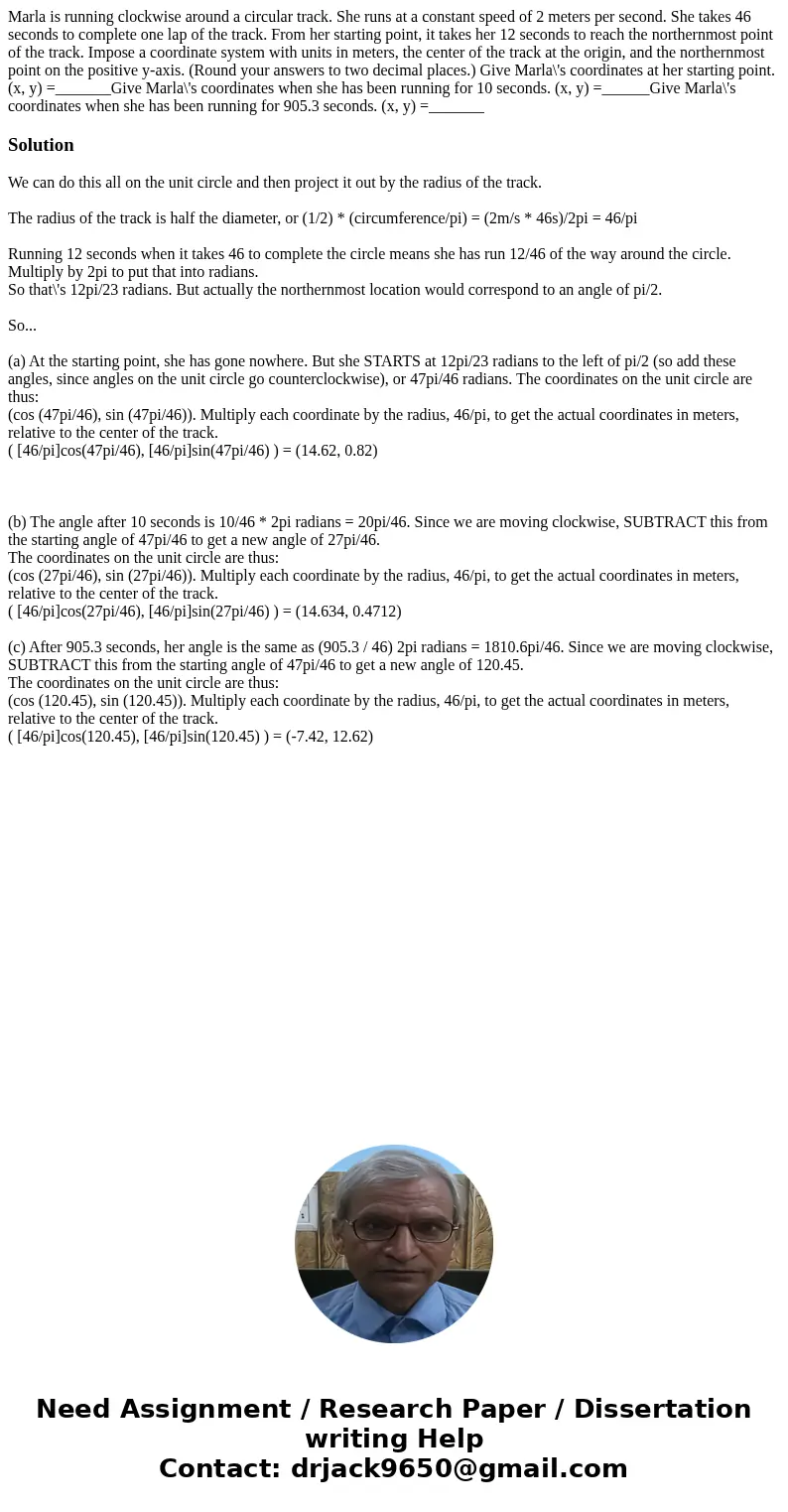Marla is running clockwise around a circular track She runs
Solution
We can do this all on the unit circle and then project it out by the radius of the track.
The radius of the track is half the diameter, or (1/2) * (circumference/pi) = (2m/s * 46s)/2pi = 46/pi
Running 12 seconds when it takes 46 to complete the circle means she has run 12/46 of the way around the circle. Multiply by 2pi to put that into radians.
So that\'s 12pi/23 radians. But actually the northernmost location would correspond to an angle of pi/2.
So...
(a) At the starting point, she has gone nowhere. But she STARTS at 12pi/23 radians to the left of pi/2 (so add these angles, since angles on the unit circle go counterclockwise), or 47pi/46 radians. The coordinates on the unit circle are thus:
(cos (47pi/46), sin (47pi/46)). Multiply each coordinate by the radius, 46/pi, to get the actual coordinates in meters, relative to the center of the track.
( [46/pi]cos(47pi/46), [46/pi]sin(47pi/46) ) = (14.62, 0.82)
(b) The angle after 10 seconds is 10/46 * 2pi radians = 20pi/46. Since we are moving clockwise, SUBTRACT this from the starting angle of 47pi/46 to get a new angle of 27pi/46.
The coordinates on the unit circle are thus:
(cos (27pi/46), sin (27pi/46)). Multiply each coordinate by the radius, 46/pi, to get the actual coordinates in meters, relative to the center of the track.
( [46/pi]cos(27pi/46), [46/pi]sin(27pi/46) ) = (14.634, 0.4712)
(c) After 905.3 seconds, her angle is the same as (905.3 / 46) 2pi radians = 1810.6pi/46. Since we are moving clockwise, SUBTRACT this from the starting angle of 47pi/46 to get a new angle of 120.45.
The coordinates on the unit circle are thus:
(cos (120.45), sin (120.45)). Multiply each coordinate by the radius, 46/pi, to get the actual coordinates in meters, relative to the center of the track.
( [46/pi]cos(120.45), [46/pi]sin(120.45) ) = (-7.42, 12.62)

 Homework Sourse
Homework Sourse